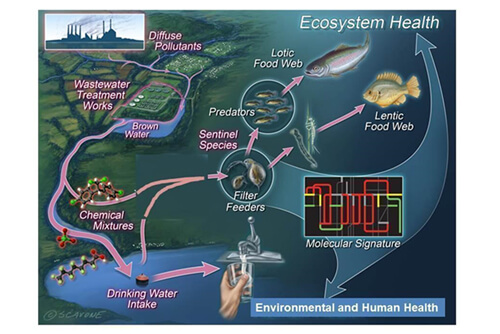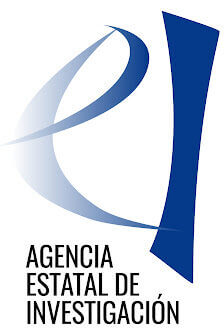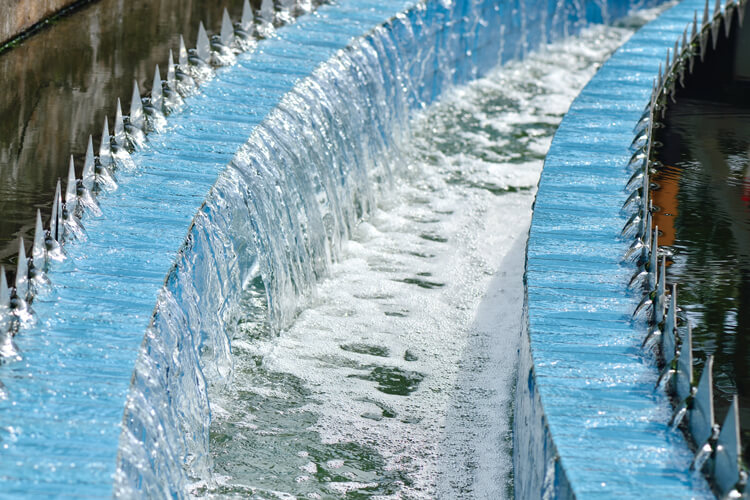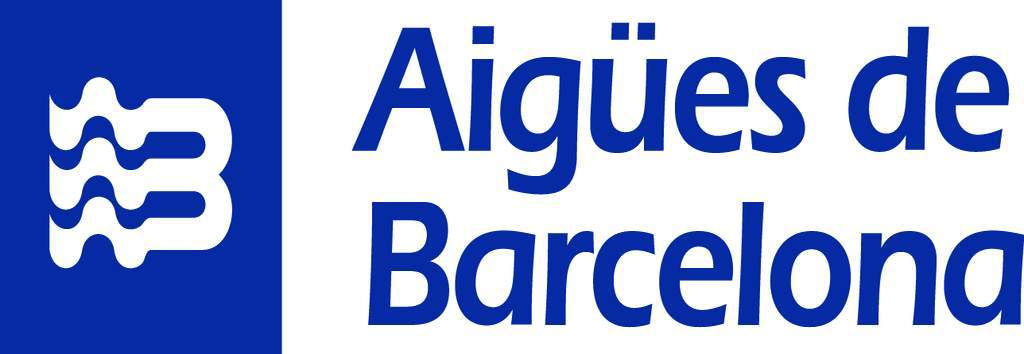Analysis of Pollutants in Reclaimed Water
It is a fact that all living beings are exposed to mixtures of chemical pollutants chronically and under real conditions. This exposure is especially critical in the case of water, where effluents from wastewater treatment plants (WWTPs) appear as one of the main sources of water pollution. This fact is even more worrying in arid regions and during episodes of drought and water scarcity, such as the present time, when sewage from water regeneration stations (WRS) is pumped upstream of rivers and reused for agriculture, irrigation, or domestic water, for example. It is therefore essential to identify the chemical agents present in reclaimed water – usually pesticides, drugs, PCBs, phthalates, and microplastics, among others – and evaluate their environmental impact on living beings and public health.
This wastewater reusage from WRS stations is currently being carried out both in the Llobregat basin and in the Besós-Tordera basin, supported by the government.
Within this context, and in collaboration with the Catalan Water Agency (ACA) and the Barcelona Water Company, researchers from the GESPA group at IQS, led by Dr Cristian Gómez, and the Institute of Environmental Assessment and Water Research (IDAEA-CSIC ), led by Dr Carlos Barata and Dr Demetrio Raldúa, are working together to establish a methodology to analyse the complex mixtures of pollutants present in reclaimed water to evaluate the risks they represent after they have been identified when re-entering the water cycle. Detecting the contaminants is the responsibility of the IQS team under the PrecisionERA (Environmental Risk Assessment) project. Subsequently, the analysis of exposure to the detected contaminants will be conducted by IDEAE – CSIC using biological models on the aquatic toxicity of zebrafish (Danio rerio and Daphnia magna).
The PrecisionERA project

In collaboration with the Besos – Tordera Consortium, a passive sampler with different absorbers has been installed at the outlet of the Montornés del Vallés Treatment Plant to obtain the water samples to be analysed, to achieve greater retention of emerging and persistent pollutants, and, above all, to obtain more effective results than what happens in water.
When handling mixtures of contaminants, in addition to their analysis and detection, the possible chemical reactions and interactions between them must also be considered. Therefore, the work strategy proposed in this project is, first of all, to carry out an exploration to characterize and identify all the chemical components present in the water samples. Analytical procedures will be optimized thanks to analytical strategies using the IQS-SCIEX Demo Lab’s advanced UHPLC-MS/MS and UHPLC-QTOF analytical instruments, facilitating the determination of both contaminants and metabolites in biological samples (at a later stage).
Once the chemical components have been identified, toxicological analyses will be conducted to evaluate the dose-response and changes in behaviour (IDAEA-CSIC). Subsequently, a metabolomic study (IQS) will be carried out to study possible changes in the metabolome of animals exposed to pollutants compared to control animals.
In the words of Dr Cristian Gómez from IQS, “this project represents a great challenge for us because, for the first time, the environmental impact of the use of reclaimed water will be studied and we will have more information on the toxicity of pollutant mixtures in aquatic organisms.”
The PrecisionERA/TED2021-130845A-C32 project is being funded by the Ministry of Science and Innovation – State Agency for Research and by the European Union “Next generation EU”/PRTR, within the framework of the call for Strategic Projects Aimed at Ecological Transition and Digital Transition 2021.
RELATED PEOPLE:
RESEARCH GROUP
Engineering and Simulation of Environmental Processes Group
RELATED PROJECTS
PrecisionERA (Metodologías de alto rendimiento basadas en análisis dirigidos/no dirigidos de huellas químicas de mezclas de contaminantes en agua y de metabolómica en organismos acuáticos)







